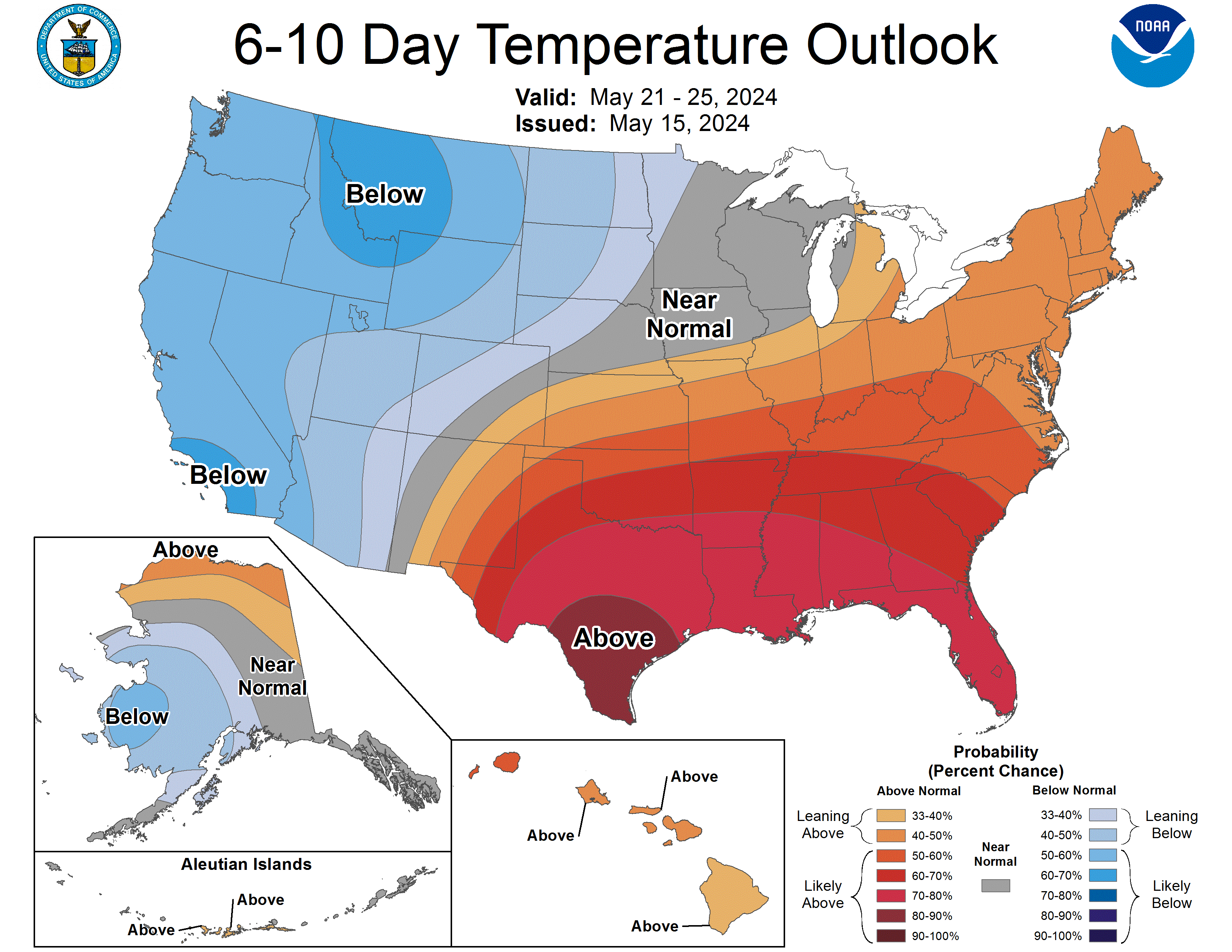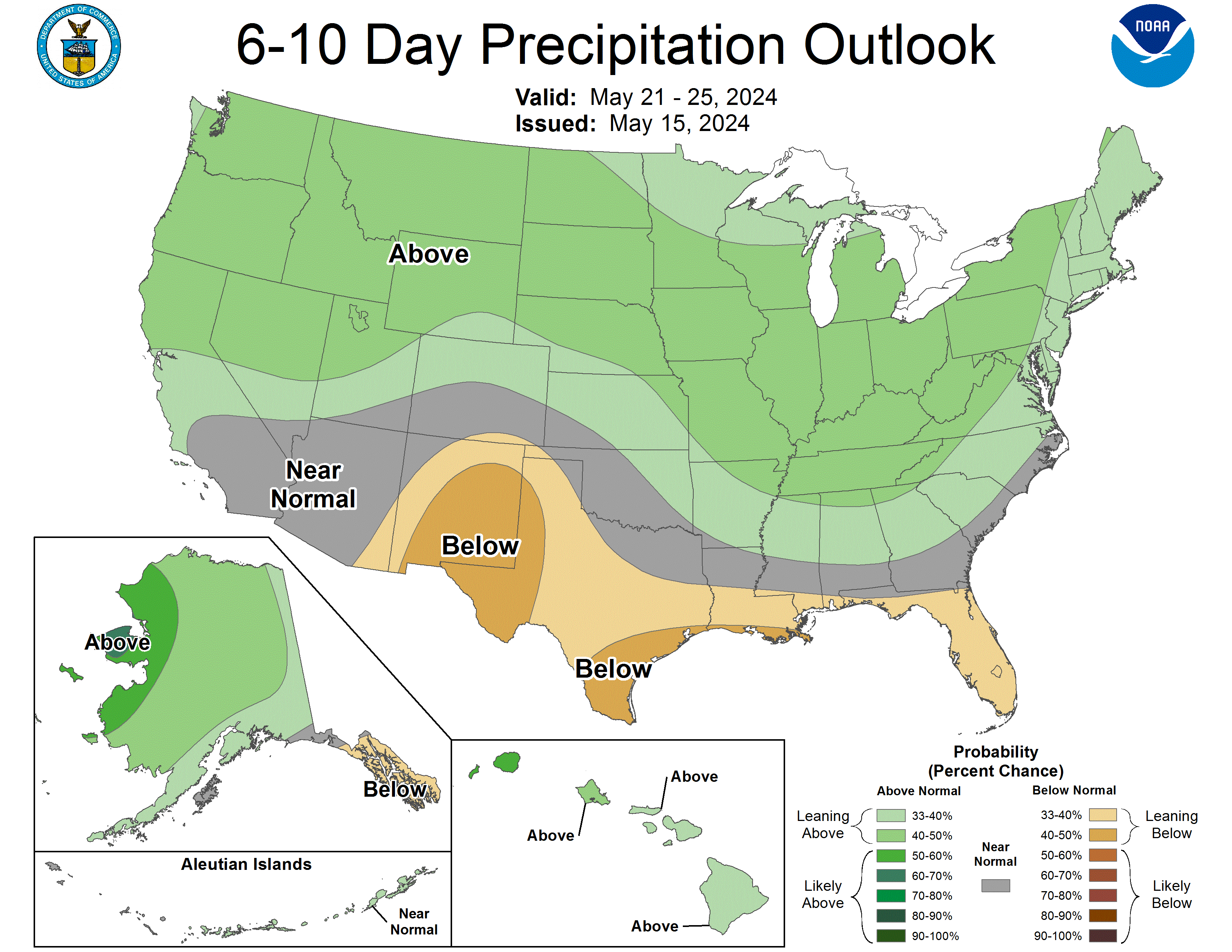Weekly Market Update 5-16-24
Here is your weekly market update from the Garden City Co-op Grain Origination Team.
Trivia
-
What is the national bird of the United States?
-
In what year was the first iPhone released?
Answers at the bottom.
Market News
MAY WASDE RECAP: Corn old crop carryout was reduced 100 million bushels from the April estimate, with exports and ethanol use both up 50 million bushels respectively. This carryout reduction was much more than expected. New crop carryout was also much lower than expected at 2.1 billion bushels, with a lower carry in, as well as reduced acreage compared to the baseline figure and increased usage. Old crop world carryout was decreased from the April number. USDA did decrease their estimates for south American corn production but remain higher than the country’s own agencies. New crop carryout was down slightly year-over-year and was 5 MMT below the average trade guess. SOYBEANS: Old crop carryout was left unchanged this month. New crop acreage was down slightly from baseline, but usage was also lower due to reduced exports. Overall ending stocks were up 100 million bushels year-over-year to 445 million bushels. This was slightly higher than the already-bearish trade guess. Brazil production was down slightly, while Argentina was left unchanged. Old crop world carryout was down slightly this month, but new crop was up almost 17 MMT year-over-year, well above the trade estimate. WHEAT: Old crop exports were raised slightly, bringing carryout down 10 million bushels. New crop production of 1.858 billion bushels was lower than expectations, leaving the carryout 20 million bushels short of estimates as well. New crop world carryout was down 4.2 MMT year-over-year, lower than the average trade guess.
KS WHEAT TOUR 2024: On Monday, 69 participants embarked on the 2024 KS Wheat Tour across the state to evaluate current Hard Winter Wheat conditions. Northern route participants reported some of the better-looking wheat they’d seen in years and southern route participants saw wheat fields with an abundance of drought-stricken conditions. Each participant uses yield calculations to estimate their individual predictions, which is then averaged with the other participants on their route and used to produce a final yield estimate. For areas of the state not impacted by drought conditions, participants predict a calculated yield of 49.9 bushels per acre on Tuesday’s trip. Wednesday’s predictions were decreased due to drought stress and freeze damage impacting the wheat quality. Participants calculated yields at 42.4 bushels per acre across the western, central, and southern portions of the state. Total 2024 Kansas wheat yield predictions were forecasted at 46.5 bushels per acre, up from the five-year tour average of 42.4 bushels per acre. With total wheat production estimated at 290.4 million bushels across the state.
EXPORTS: The recently inspected corn showed that 36.9 million bushels were shipped, below the five-year average for this time of year, but still met expectations. The largest importers were Japan and Mexico. Soybeans reported 14.9 million bushels, which is ahead of the pace required by the USDA. The inspected wheat was within estimates at 13.5 million bushels, keeping pace, with Mexico and China being the major contributors in that market. Currently, 5.5 million bushels of milo are shipped. The corn sold this past week was softer, with 29.2 million bushels sold, leaving about 55.9 million bushels behind pace to meet USDA’s estimate. New crop sales were at the lower end of the 5-year range. While soybean sales were disappointing, both products were above the median. Old crop 9.8 million bushels & 900,000 new crop contracts. Wheat sales were not negative, which is a positive sign. Mexico withdrew a prior purchase, and there were 2.9 million bushels sold for old crop and 11.2 million bushels for new crop. No new crop sales were reported for milo, and 500,000 bushels were sold for the current marketing year.
CROP PROGRESS: The latest crop progress report shows that corn planting is five percent behind the five-year average, with 49% planted. Soybean planting is just one percent ahead of the historical pace, with 35% planted. U.S. Farm Report host Tyne Morgan discussed the weather patterns delaying progress, including solar storms that have disrupted GPS connections in some northern areas. Emerged corn stands at 23% overall, two points ahead of the five-year average. Soybean emergence is at 16% overall, a solid 6% ahead of pace. Winter wheat condition overall is 50% G/E, with Kansas at 31% G/E, down 1% from the week prior. However, below the 5-year average.
Regional variations in progress are evident, with Wisconsin and Colorado seeing the most significant gains in corn planting over the past seven days. Iowa added an impressive 16 percent, while Colorado at 21%. However, both states are still behind the five-year pace, highlighting the unique challenges they face. Nebraska farmers made significant progress in soybeans, with 19% planted in the past week, while Wisconsin added 16%. Overall, soybean progress currently lags behind corn planting progress by 14%.
Weather: Today and Friday are sunny, with high temperatures expected to be in the high 70s/low 80s and low temperatures expected to be in the high 40s/low 50s. Saturday is sunny with a high near 87°F and winds between 7 and 15 mph. We have a 20% chance of scattered showers and thunderstorms expected Saturday night into Sunday morning and won’t see another chance of rain until Monday night; with a 20% chance of shower and thunderstorms expected after 1 am. Sunday is looking like partly sunny weather with a high near 92°F. The remainder of the week appears to be sunny and clear, with highs near 80°F and low temperatures expected to be in the 50s
|
|
|
Trivia Answers
- Eagle
- 2007

